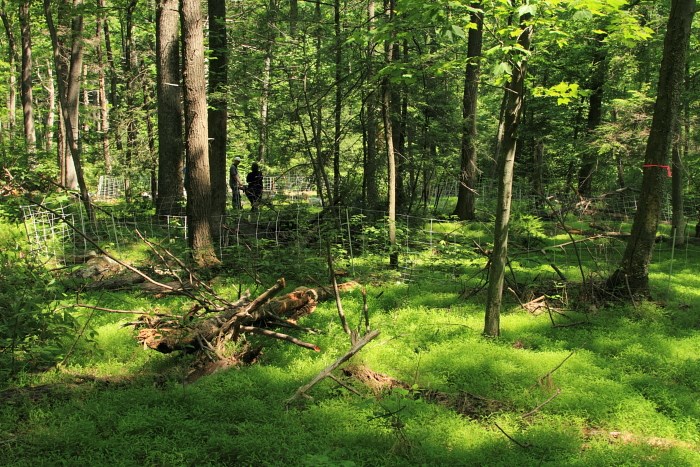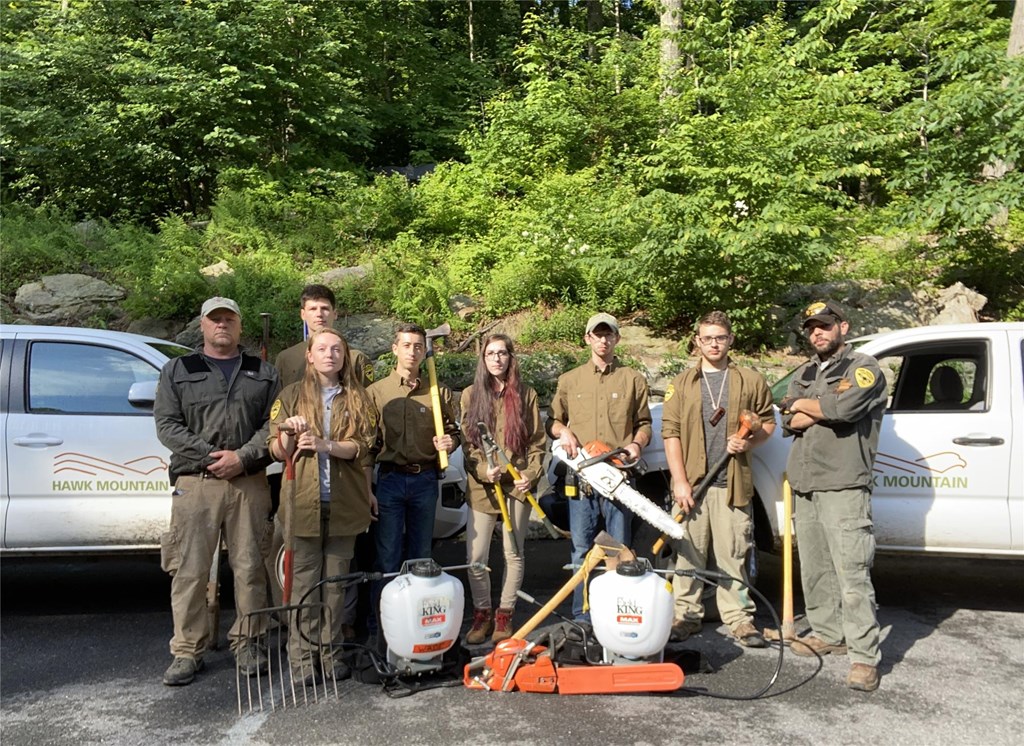Invasive Plant Management at Hawk Mountain Sanctuary
Posted on April 27, 2023 in Special Projects

Pennsylvania supports over 2,000 species of native plants, many that grow along the 185-mile stretch of the Kittatinny Ridge, and all are threatened by invasive species. These introduced plants quickly take over, outcompeting native species for resources. The resulting lack of diversity negatively impacts wildlife habitat, water quality, and contributes to an overall decline in the health of the Appalachian ecosystem. Hawk Mountain Sanctuary, like many sites along the Ridge, is experiencing the significant threat of non-native vegetation firsthand, with an estimated 300+ acres impacted.
“Non-native, invasive plants are the greatest threat to Hawk Mountain’s forests and other natural areas in the state,” says Director of Stewardship Todd Bauman, and he would know. For nearly a decade, Bauman has supervised a committed, long-term remediation strategy in the fight against invasives, guided by the Sanctuary’s recently updated Forest Management Plan.
“Our goal is to reduce the spread of invasives, demonstrate best practices in land management, serve as a model to others, and engage with volunteers and seasonal crew members to get the job done,” Bauman explains.
Land surveys by Hawk Mountain’s stewardship team have identified at least 9 invasive plant species, including Japanese stiltgrass (Microstegium vimineum) and Japanese barberry (Berberus thunbergii). Findings noted the most well-established plants were concentrated in core visitor areas, such as along roadsides and hiking trails. After determining areas of highest impact, a management program was developed.

A combination of spraying, pulling, and mowing is utilized each summer to control the invasive vegetation. A forestry-approved herbicide is sprayed on Japanese stilt grass , Japanese barberry, and tree-of-heaven (Ailanthus altissima) using a backpack sprayer. Weed-whacking garlic mustard (Allaria petiolata) before pollination occurs in the spring prevents seed formation. Areas heavily impacted by Japanese barberry and Tatarian honeysuckle (Lonicera tatarica) are hand pulled.
The top culprit in the spread of non-native plants at the Sanctuary has been stormwater from the roadway that bisects the property, so additional efforts have been made to control runoff, including the construction of retention basins and forebays along roadways and trails. These methods have been successful but require funding to incorporate structures on all culverts.
Other successful methods include a 2.5 acre deer exclosure with plans to construct 10 additional smaller exclosures in heavily impacted areas. Volunteers and staff donate time to help propagate and plant native species to help reestablish areas where invasives have been removed. The reappearance of native plants rewards the team’s hard work and substantiates that these methods are effective.
To support this work, please contact Todd Bauman at [email protected].